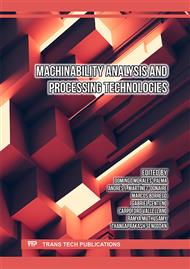p.129
p.139
p.149
p.161
p.171
p.185
p.197
p.207
p.221
Materials for Hydrogen Storage and Transport: Implications for Risk-Based Inspection
Abstract:
The growing interest towards hydrogen technologies and their implementation in the hydrocarbon and chemical process industry makes maintenance planning of storage and transport equipment an emerging safety aspect. With respect to high-pressure working equipment, Risk-Based Inspection methodology (RBI) aims at minimizing the risk of loss of containment due to materials’ deterioration mechanisms. This set of procedures focuses on the mechanical integrity of equipment to achieve crucial risk mitigation by means of risk-informed inspection planning and maintenance activities. In addition, hydrogen-induced damages are often generalized or even neglected by the existing RBI standards and recommended practices. On this basis, high-pressure vessels, process piping and storage tanks working in gaseous or liquid hydrogen environments, which are exposed to hydrogen-induced deterioration mechanisms, might be subjected to an inaccurate evaluation of the associated risk and hazards when these RBI standards are applied. For this reason, this work proposes a review of the pipelines steels commonly used for gaseous hydrogen transport to investigate the possible limitations of the standard RBI planning methodologies, when applied to hydrogen technologies. More accurately, the pipeline steels’ susceptibility to hydrogen-induced degradations mechanisms will be discussed to underline assumptions and hypothesis limiting the conventional RBI applicability. Therefore, the overall suitability of standard RBI planning with respect to hydrogen equipment is discussed, highlighting possible relevant gaps as a general result.
Info:
Periodical:
Pages:
221-230
Citation:
Online since:
October 2023
Price:
Сopyright:
© 2023 Trans Tech Publications Ltd. All Rights Reserved
Share:
Citation:



